
The Audubon Theatre and Ballroom, generally referred to as the Audubon Ballroom, was a theatre and ballroom located at 3940 Broadway at West 165th Street in the Washington Heights neighborhood of Manhattan, New York City. It was built in 1912 and was designed by Thomas W. Lamb. The theatre was known at various times as the William Fox Audubon Theatre, the Beverly Hills Theater, and the San Juan Theater. The ballroom is noted for being the site of the assassination of Malcolm X on February 21, 1965. It is currently the Audubon Business and Technology Center, which is part of Columbia University's Audubon Research Park.
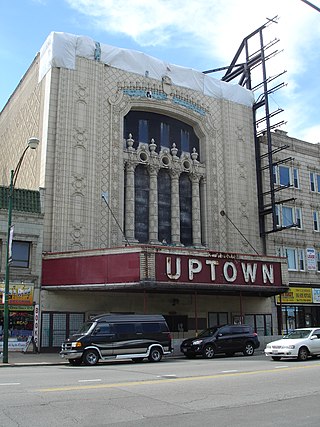
A movie palace is a large, elaborately decorated movie theater built from the 1910s to the 1940s. The late 1920s saw the peak of the movie palace, with hundreds opening every year between 1925 and 1930. With the advent of television, movie attendance dropped, while the rising popularity of large multiplex chains in the 1980s and 1990s signaled the obsolescence of single-screen theaters. Many movie palaces were razed or converted into multiple-screen venues or performing arts centers, though some have undergone restoration and reopened to the public as historic buildings.
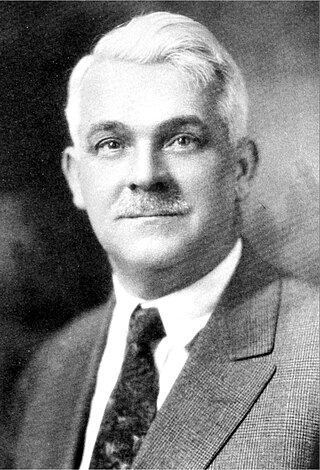
Thomas White Lamb was a Scottish-born, American architect. He was one of the foremost designers of theaters and cinemas of the 20th century.
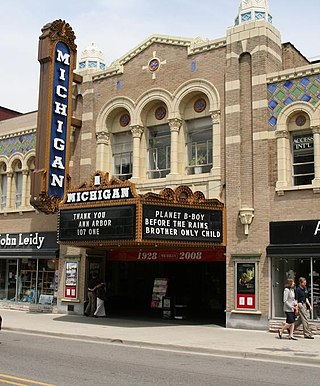
The Michigan Theater is a movie palace in Ann Arbor, Michigan, United States, near the Central Campus of the University of Michigan. It shows independent films and stage productions, and hosts musical concerts.

Francis Hatch Kimball was an American architect practicing in New York City, best known for his work on skyscrapers in lower Manhattan and terra-cotta ornamentation. He was an associate with the firm Kimball & Thompson. His work includes the Empire Building, Manhattan Life Insurance Building, and Casino Theatre. All but one of Kimball's works were in the United States.
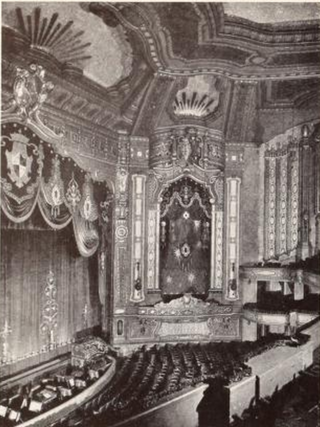
The Ambassador Theatre was a lavish movie palace-type theater in St. Louis, Missouri, designed by the architectural firm of Rapp and Rapp. A landmark of rococo 1920s theater design, it opened in 1926 and was demolished in 1997.
The Center Theatre was a theater located at 1230 Sixth Avenue, the southeast corner of West 49th Street in Rockefeller Center in New York City. Seating 3,500, it was originally designed as a movie palace in 1932 and later achieved fame as a showcase for live musical ice-skating spectacles. It was demolished in 1954, the only building in the original Rockefeller Center complex to have been torn down.

The Hippodrome Theatre, also called the New York Hippodrome, was a theater located on Sixth Avenue between West 43rd and West 44th Streets in the Theater District of Midtown Manhattan in New York City. The theater operated from 1905 to 1939 and was called the world's largest theater by its builders, with a seating capacity of 5,300 and a stage measuring 100 by 200 feet. It had state-of-the-art theatrical technology, including a rising glass water tank.
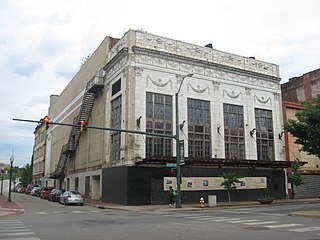
The Liberty/Paramount Theatre was an early movie palace located on West Federal Street and Hazel Avenue in Youngstown, Ohio.
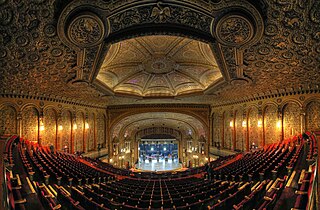
The United Palace is a theater at 4140 Broadway in the Washington Heights neighborhood of Manhattan in New York City. The theater, occupying a full city block bounded by Broadway, Wadsworth Avenue, and West 175th and 176th Streets, functions both as a spiritual center and as a nonprofit cultural and performing arts center. Architect Thomas W. Lamb designed the theater as a movie palace, which opened in 1930 as one of five Loew's Wonder Theatres in the New York City area. The theater's lavishly eclectic interior decor was supervised by Harold Rambusch, who also designed the interior of the Roxy Theatre and the Waldorf-Astoria Hotel.

An atmospheric theatre is a type of movie palace design which was popular in the late 1920s. Atmospheric theatres were designed and decorated to evoke the feeling of a particular time and place for patrons, through the use of projectors, architectural elements and ornamentation that evoked a sense of being outdoors. This was intended to make the patron a more active participant in the setting.

The Broadway Theater District in the Historic Core of Downtown Los Angeles is the first and largest historic theater district listed on the National Register of Historic Places (NRHP). With twelve movie palaces located along a six-block stretch of Broadway, it is the only large concentration of movie palaces left in the United States. The same six-block stretch of Broadway, and an adjacent section of Seventh Street, was also the city's retail hub for the first half of the twentieth century, lined with large and small department stores and specialty stores.

Clarence Howard Blackall was an American architect who is estimated to have designed 300 theatres.

The Boston Opera House, also known as the Citizens Bank Opera House, is a performing arts and esports venue located at 539 Washington St. in Boston, Massachusetts. It was originally built as the B.F. Keith Memorial Theatre, a movie palace in the Keith-Albee chain. The chain became part of RKO when it was established just before the theater opened on October 29, 1928, and it was also known as the RKO Keith's Theater. After operating for more than 50 years as a movie theater, it was rededicated in 1980 as a home for the Opera Company of Boston, which performed there until the opera company closed down in 1990 due to financial problems. The theater was reopened in 2004 after a major restoration, and it currently serves as the home of the Boston Ballet and also hosts touring Broadway shows.

The Mississippi Lofts and Adler Theatre is an apartment building and theater complex located in downtown Davenport, Iowa, United States. It is individually listed on the National Register of Historic Places by its original name, the Hotel Mississippi and RKO Orpheum Theater. The Hotel Mississippi was listed on the Davenport Register of Historic Properties in 2005. In 2020 the complex was included as a contributing property in the Davenport Downtown Commercial Historic District.

Eugene De Rosa was an Italian American architect, called at birth Eugenio. He worked in New York City and specialized in the design of theatres.

The Garde Arts Center is a non-profit performing arts center and cinema located at 325 State Street at the corner of Huntington Street in New London, Connecticut. It owns and operates the Garde Theatre, a historic movie palace and current concert venue with approximately 1,500 seats.

The Oregon Theatre, or Oregon Theater, was an adult movie theater in the Richmond neighborhood of southeast Portland, Oregon, United States. The theater was completed in 1925 and originally housed a Wurlitzer pipe organ and vaudeville stage. It would later screen Hollywood, art-house, and Spanish-language films. The building was acquired by the Maizels family in 1967 and became an adult cinema in the 1970s. It continued to operate as the city's longest running pornographic cinema and remained owned by a member of the Maizels family until 13 February 2020, when it went into foreclosure. It closed in early March 2020.

The Stavros Niarchos Foundation Parkway, or simply the Parkway, is a movie theater located at 5 West North Avenue in Baltimore, Maryland. The Parkway is open as of May 3, 2017, and is the new permanent home of MdFF. The Maryland Film Festival, a 5-day annual festival created and operated by MdFF, is housed in and around the Parkway and throughout the Station North Arts and Entertainment District.



























